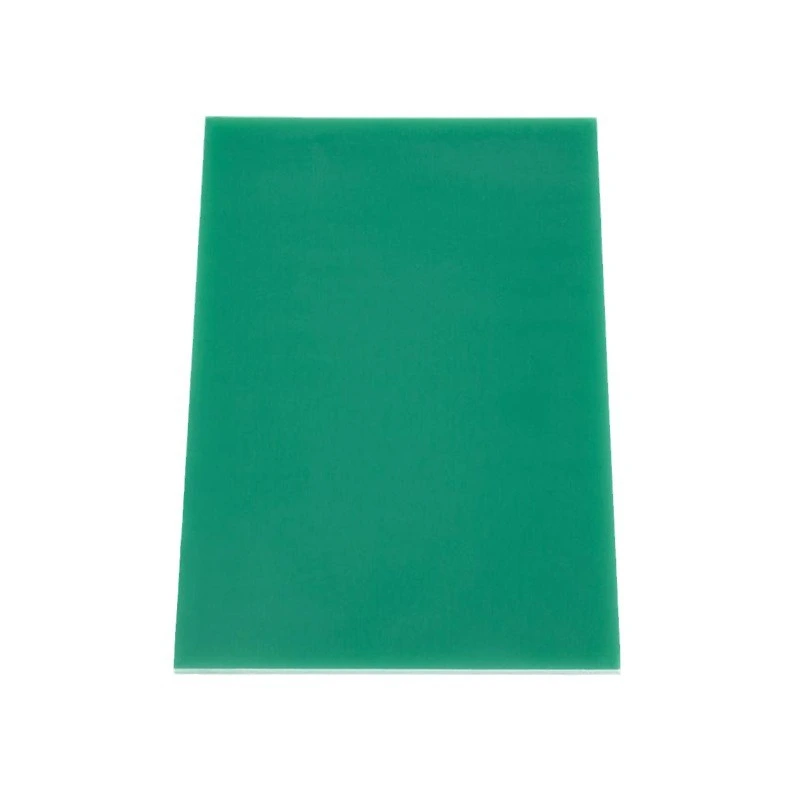Optimal Storage Conditions for FR4 Sheets
Temperature and Humidity Control
Maintaining appropriate temperature and humidity levels is paramount for the longevity of FR4 sheets. The ideal storage environment should have a temperature range of 20-25°C (68-77°F) and relative humidity between 40-60%. Fluctuations in these parameters can lead to dimensional changes, warping, or delamination of the sheets. Consider using climate-controlled storage areas or dehumidifiers to maintain consistent conditions.
Protection from Light and Contaminants
FR4 sheets should be shielded from direct sunlight and UV exposure, as prolonged exposure can degrade the material's properties. Store the sheets in opaque containers or cover them with light-blocking materials. Additionally, protect the sheets from dust, debris, and chemical contaminants by keeping them in sealed packaging or storage units. This precaution helps maintain the surface quality and prevents potential issues during subsequent manufacturing processes.
Proper Stacking and Support
When storing multiple FR4 sheets, it's crucial to stack them correctly to prevent warping or damage. Place the sheets on a flat, level surface, ensuring even weight distribution. For vertical storage, use specially designed racks that support the sheets along their entire length. Avoid stacking heavy items on top of FR4 sheets, as this can cause deformation or stress on the material. Implementing proper support techniques will help maintain the flatness and structural integrity of the sheets over time.
Handling Techniques for FR4 Sheets
Personal Protective Equipment (PPE)
When handling FR4 sheets, it's essential to use appropriate personal protective equipment. Wear clean, lint-free gloves to prevent oil and dirt transfer from hands to the sheet surface. Safety glasses should be worn to protect eyes from potential debris or particles. If cutting or machining FR4 sheets, use a dust mask to avoid inhaling any airborne particles. Proper PPE not only ensures the safety of personnel but also helps maintain the cleanliness and quality of the FR4 sheets.
Lifting and Transportation Methods
Proper lifting and transportation techniques are crucial to prevent damage to FR4 sheets. For smaller sheets, use both hands to support the material evenly. Larger sheets may require two people or mechanical assistance, such as vacuum lifters or sheet handlers. When moving sheets, keep them in a vertical position to reduce the risk of flexing or warping. Use carts or trolleys with flat surfaces for transporting multiple sheets, ensuring they are secured to prevent shifting during movement.
Cutting and Machining Precautions
When cutting or machining FR4 sheets, take necessary precautions to maintain material integrity and ensure safety. Use sharp, clean cutting tools to minimize stress on the material and reduce the risk of delamination. Employ appropriate speeds and feeds when drilling or routing to prevent overheating and potential damage to the epoxy resin. Always follow manufacturer guidelines for specific cutting and machining recommendations. Proper dust collection systems should be in place to manage particulates generated during these processes.
Long-Term Preservation Strategies for FR4 Sheets
Regular Inspection and Maintenance
Implementing a routine inspection schedule is vital for the long-term preservation of FR4 sheets. Periodically examine stored sheets for signs of warping, discoloration, or edge damage. Check for any moisture accumulation or contamination that may have occurred during storage. If any issues are detected, address them promptly to prevent further degradation. Maintain cleanliness in storage areas and update inventory records to track the age and condition of stored sheets.
Rotation and Stock Management
Effective stock rotation is crucial for managing FR4 sheet inventory. Implement a first-in, first-out (FIFO) system to ensure older stock is used before newer materials. This practice helps prevent prolonged storage of any particular batch of sheets. Regularly assess inventory levels and adjust ordering patterns to minimize excessive storage times. By maintaining an optimal stock level and rotation strategy, you can reduce the risk of material degradation due to extended storage periods.
Documentation and Traceability
Maintaining comprehensive documentation for FR4 sheets is essential for long-term quality assurance. Keep detailed records of each batch, including manufacturer information, date of receipt, storage conditions, and any handling or processing history. Implement a labeling system that allows for easy identification and traceability of individual sheets or batches. This documentation not only aids in quality control but also facilitates troubleshooting if any issues arise during subsequent use of the material.
Conclusion
Proper storage and handling of FR4 sheets are indispensable for maintaining their quality and performance over extended periods. By implementing optimal storage conditions, employing careful handling techniques, and adopting long-term preservation strategies, you can significantly extend the usable life of FR4 sheets. Regular inspection, proper stock management, and comprehensive documentation further enhance the reliability and traceability of these essential materials. Adhering to these guidelines ensures that FR4 sheets remain in prime condition, ready for use in critical electronic applications whenever needed.
Contact Us
For more information about our FR4 sheets and expert advice on storage and handling, please contact us at info@jhd-material.com. Our team of specialists is ready to assist you in optimizing your FR4 sheet management practices.






